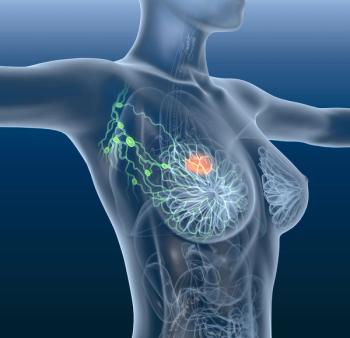
Managing AEs Associated With Capivasertib Combo in HR+/HER2– Breast Cancer
Hope Rugo, MD, speaks to the importance of identifying patients with aromatase inhibitor–resistant, hormone receptor–positive, HER2-negative advanced breast cancer who are undergoing treatment with capivasertib/fulvestrant who may be at a high risk of developing diabetes or hyperglycemia.
Although there are no currently known risk factors that are predictive of adverse effects (AEs) following treatment with capivasertib and fulvestrant (Faslodex), Hope Rugo, MD, explained the importance of educating patients with aromatase inhibitor–resistant, hormone receptor–positive, HER2-negative advanced breast cancer on drug holding.
In an interview with CancerNetwork® during the
Among those treated with the combination, hyperglycemia was more common in patients with a baseline history of diabetes (29%; n = 10/34) compared with patients who had no history of the disease (15%; n = 48/321). Hyperglycemia also occurred more in patients with a body mass index of 30 kg/m2 or more compared with less than 30 kg/m2.
Transcript:
We don't know any risk factors for the diarrhea or the rash. Really, the most appropriate approach is to take the patients that you're treating and really educate them and your staff; make sure that patients have the appropriate tools and know to hold the drug if they get toxicity.
Because it's intermittent dosing, it's very straightforward. For the hyperglycemia, the most important thing for our patients, regardless of what treatment we're giving them, is to try and get a little bit better glucose control because that's going to help them do better with their cancer and have less toxicities. That's really the main way to manage it: understanding the hemoglobin a1c, how good their control is with oral agents, [knowing] if they have diabetes, and understanding the risk of a high body mass index where they might have a higher risk of diabetes or hyperglycemia, which we actually saw in our detailed analysis.
Reference
Rugo HS, Oliviera M, Howell SJ, et al. Capivasertib (C) and fulvestrant (F) for patients (pts) with aromatase inhibitor (AI)-resistant HR+/HER2– advanced breast cancer (ABC): characterization and management of common adverse events (AEs) from the phase 3 CAPItello-291 trial. J Clin Oncol. 2023;41(suppl 16):1067. doi:10.1200/JCO.2023.41.16_suppl.1067
Newsletter
Stay up to date on recent advances in the multidisciplinary approach to cancer.
































































































